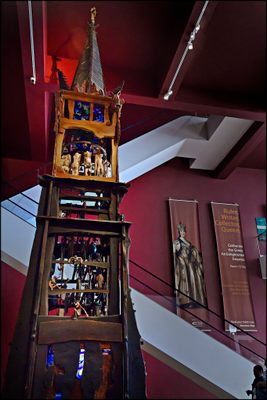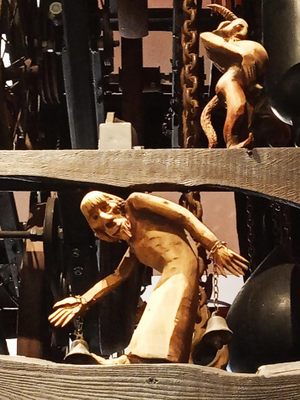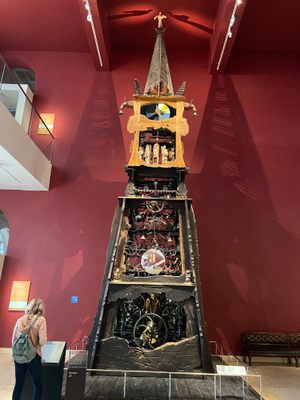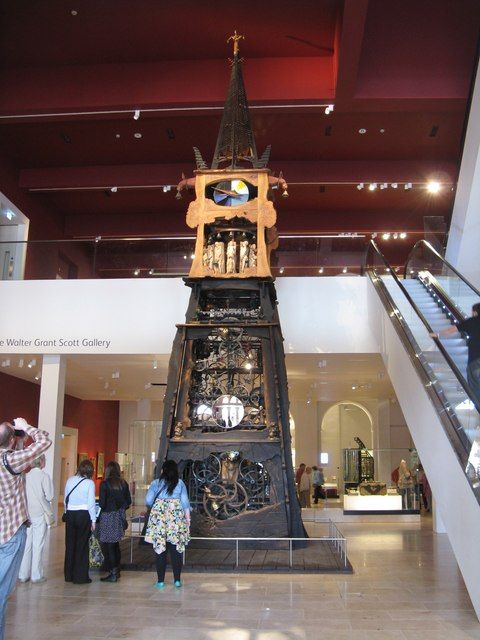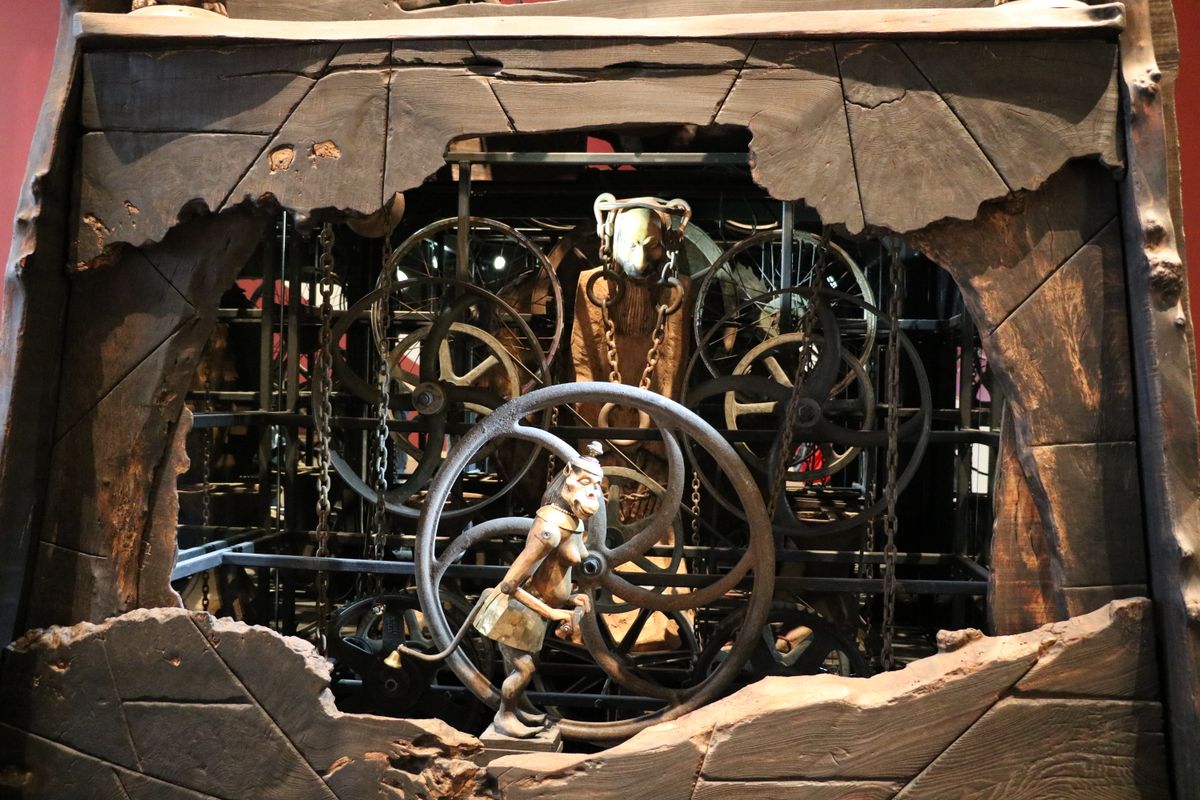About
Imagine a clock a couple of stories tall, with all its innards visible, that strikes over several minutes in a performance set to colored lights and music. The various levels of the clock "awaken" from the floor up. These gradations depict a different stage of a church's construction, from crypt, nave, belfry, to spire. Figures and colors at the bottommost level evoke a scene of Hell, although the wonderful classical music is majestic from the beginning without being ominous.
Subsequent levels break into motion in sequence, each containing kinetic statuettes of figures from history—dictators like Adolf Hitler and Joseph Stalin appear—as well as various visual references to scientific progress and human achievement, but also genocide and other self-inflicted tragedies of humankind. At the top-most clock level is a rotating display of ivory figures, partly in chains, and at the very top of the structure all is summarized by a pieta. These effigies represent the 12 months of the year with a corresponding misfortune, for instance; December/ Pandora's Box or July/ War Camps.
The complexity and artistry of the Millennium Clock are overwhelming, and the warning and tragedy profound, but it also offers a perverse sort of hope: that if humans are this aware of the danger and misery of their history, perhaps we can still find and accept redemption? The clock is worth seeing even when it is quiet; it is moving and mesmerizing when it strikes.
Related Tags
Know Before You Go
The clock doesn't strike every hour; it's best to call ahead and find out the current schedule.
Museum is free to enter and the clock tower is located on the second floor, across from the atrium of the Grand Gallery, near the Discoveries Gallery.
Flavors of Scotland: Beyond the Haggis
Smoked seafood, single malt whisky, and warm hospitality.
Book NowCommunity Contributors
Added By
Published
June 19, 2019

